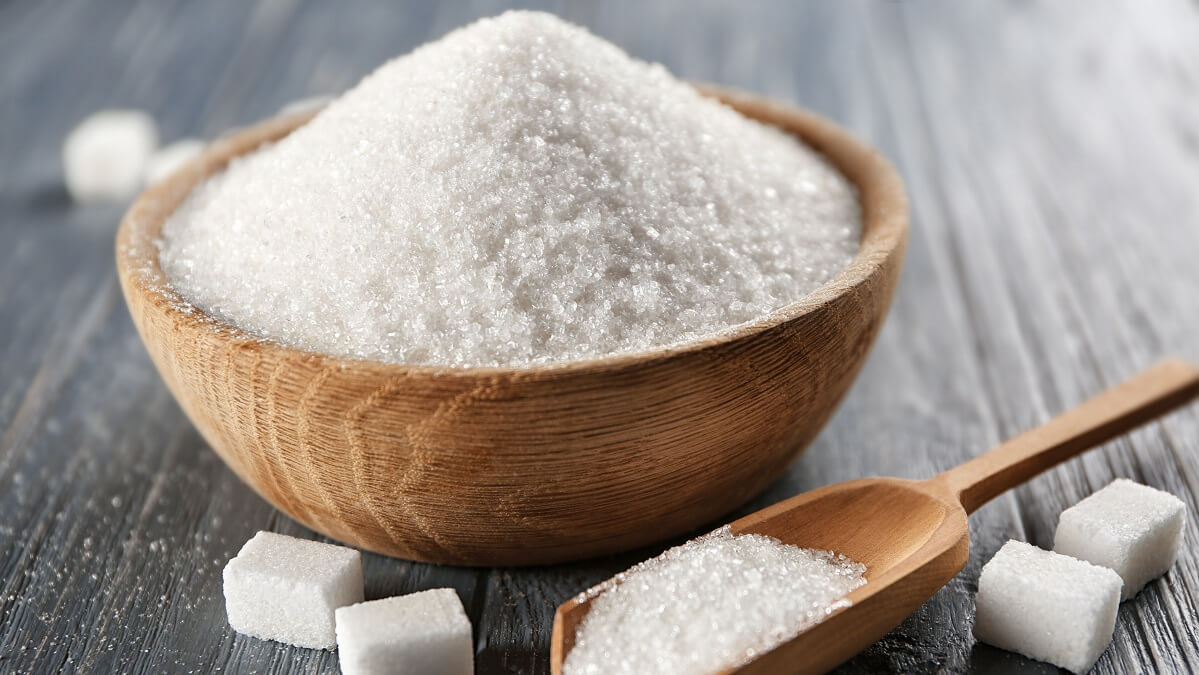Sugar, so often seen as a villain when it comes to your health, could soon become a hero, based on new research.
But before you add an extra teaspoon of sweetness to your coffee or tea, there’s a caveat. The sugar being hailed in this case is a particular type known as ‘mannose’.
It is produced naturally by humans and is crucial to many physiological processes in the human body. That makes mannose a hero of sorts already.
What could boost its status even further is the research, published in the the scientific journal elife this month, that demonstrates its potential as a secondary cancer treatment.
More about mannose
The human body adds mannose to proteins to stabilise their structure and help them interact with other molecules. This process, known as glycosylation, is essential for life. Malfunctions in the glycosylation process are associated with rare, often life-threatening, human diseases.
Mannose is already used as a treatment for these diseases, but Dr Hudson Freeze, co-author of the study, says the sugar may have even greater therapeutic potential.
“We believe that there may be ways to leverage mannose against cancer and other diseases as well,” he says.
Dr Freeze and his colleagues based their research on a long-known fact about mannose – that it kills honeybees.
“It’s been known for more than a century that mannose is lethal to honeybees because they can’t process it like humans do,” says Dr Freeze. “It’s known as honeybee syndrome.”
With that in mind, Dr Freeze and his team decided to expand on that knowledge.
“We wanted to see if there is any relationship between honeybee syndrome and the anti-cancer properties of mannose,” he says.
The team re-created honeybee syndrome using genetically engineered human cancer cells from fibrosarcoma, a rare cancer that affects connective tissue.
They found that without the enzyme needed to metabolise mannose, cells replicate slowly. What’s more, it made the cells significantly more vulnerable to chemotherapy.
Implications
While not directly attacking cancer cells, the use of mannose could act as something of an ‘assistant’ to chemotherapy.
Of course, as is the case with much pioneering research, these developments come with a caution. The honeybee syndrome effect depends on vital metabolic processes.
More research is needed to determine which types of cancer would be most vulnerable to mannose.
But, as the elife editor’s evaluation of the paper explains: “Harada et al. provide convincing evidence that an inability to metabolise mannose leads to impaired synthesis of deoxynucleotide triphosphates and DNA.”
In short, that means mannose can potentially be leveraged to sensitise cancer cells to chemotherapy.
And anything that helps make chemotherapy more effective is sweet news.
Had you heard of honeybee syndrome? Does this research give you hope in the fight against cancer? Let us know in the comments section below.
Also read: Six simple steps to cut out sugar
Health disclaimer: This article contains general information about health issues and is not advice. For health advice, consult your medical practitioner.


The downside of mannose is that it is an adjunct to chemo and it is the chemo that I would refuse in the unlikely event that any of my cells become cancerous. Unlikely? I can say this because of my dedication to researching why it was that pre-agricultural, traditionally living cultures in Australia, Africa and the Americas were found through paleoethnopathology methodology to have ‘extremely rare’ incidences of cancer (and a host of other diseases of nutrition).
Years ago, I supplied a resin from an Australian wild food plant to researchers studying the anti-cancer effects of the resin. It was able to kill tissue cultures of a wide range of cancer lines and yet leave normal somatic cells untouched. We repeated the lab work at the University of Sydney’s Chemical Engineering Department and got the same results.
This motivated me to commercialize the resin as a food product with unique health qualities.
The resin goes into a whole food product I call LIFE (Lyophilized Indigenous Food Essentials)™ and it becomes part of a freeze-dried, whole food mix of 27 ingredients all up.
The food:health relationships are awe-inspiring and I am pleased to have had over a dozen terminally ill people discover a new life in remission from their ailments. No claims here. I do not target diseases, nor suggest that my products cure any condition
I maket 4 whole food blends which collectively, I call the Holy Grail to Health. It includes my flagship product, LIFE and 3 other blends making the collection the most phytonutrient-rich source of a whole range of biologically active food components that are generally missing or in low quantities in modern foods.
Did you know that wild foods deliver a broad range of antioxidants, both fat soluble and water soluble? Modern fruit selections we see in the stores or which we might grow ourselves, have lost all the fat soluble antioxidants, that is apart from avocado which still retains the fat soluble class of these phytonutrients. The other agricultures fruits miss out on half their past potential simply because of their varietal selections are better for post-harvest handling, ripening control, long term storage ability, sweetness, size, juiciness and robustness for distribution. Oops. Nutrition has never been a priority for supermarkets and the agronomists who service them.
Our ideal health is all about phytonutrients; what they are and what they do for us and this is exactly what LIFE and the Grail are all about.